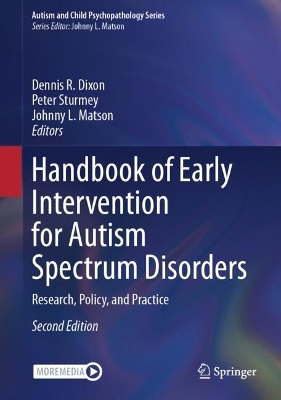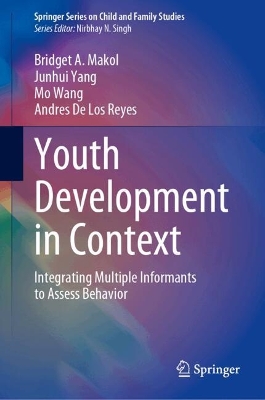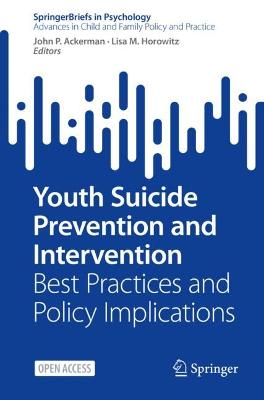Handbook of Children and Screens
 portes grátis
portes grátis
Handbook of Children and Screens
Digital Media, Development, and Well-Being from Birth Through Adolescence
Hale, Lauren; Christakis, Dimitri A.
Springer International Publishing AG
01/2025
657
Dura
9783031693618
Pré-lançamento - envio 15 a 20 dias após a sua edição
Descrição não disponível.
Chapter 1. Introduction.- Chapter 2. Global Perspectives on Youth and the Digital Environment: Learnings from Majority World Countries.- Part I. Research Concerning Cognitive, Physical, Mental, and Psychosocial Impacts on Children.- Digital Media, Cognition, and Brain Development.- Chapter 3. Introduction to the Section on Digital Media, Cognition, and Brain Development.- Chapter 4. Digital Media, Cognition, and Brain Development in Infancy and Childhood.- Chapter 5. Digital Media, Cognition, and Brain Development in Adolescence.- Chapter 6. The Short- and Long-Term Effects of Media Multitasking and Digital Distraction.- Chapter 7. Digital Media Use and Language Development in Early Childhood.- Chapter 8. Screen Media and Children's Imagination, Creativity, and Play.- Chapter 9. Screen Media and Neural, Learning, and Developmental Differences.- Physical Health and Digital Media.- Chapter 10. Introduction to the Section on Screens and Physical Health.- Chapter 11. Digital Screen Media Use, Movement Behaviors, and Child Health.- Chapter 12. Screen Media, Obesity, and Nutrition.- Chapter 13. Digital Food Marketing and Young People's Health and Well-Being.- Chapter 14. Portrayals of Harmful Products in Digital Media: Corporate Influences on Adolescent Health.- Chapter 15. What Is Known About the Link Between Screens and Sleep Health.- Chapter 16. Screen Use, Physical Injuries, and Orthopedic Health.- Chapter 17. Screens and Ocular Health.- Mental Health and Digital Media.- Chapter 18. Introduction to the Section on Mental Health and Digital Media.- Chapter 19. Youth and Anxiety: Is It Time to Unplug from Screens?.- Chapter 20. Screen Media and Depression.- Chapter 21. Media Influences on Self-Harm, Suicidality, and Suicide.- Chapter 22. Social Media and Youth Mental Health: A Departure from the Status Quo.- Chapter 23. Social Media Use, Body Image Concerns, and Disordered Eating Among Adolescents.- Chapter 24. Identifying Risk for Mental Health Problems Related to Social Media: Who Is Most at Risk?.- Chapter 25. Leveraging Digital Media to Promote Youth Mental Health: Prevention of Mental Health Problems Related to Media.- Chapter 26. Digital Therapeutics in Child Psychiatry: Harnessing Technology to Treat Pediatric Mental Health.- Problematic Use of the Internet in Childhood and Adolescence.- Chapter 27. Introduction to the Section on Problematic Use of the Internet in Childhood and Adolescence.- Chapter 28. A General Perspective of Problematic Internet Use.- Chapter 29. Problematic Social Media Use in Childhood and Adolescence.- Chapter 30. Gaming Disorder Among Children and Adolescents.- Chapter 31. Dysregulated Use of Mobile/Smart Phones.- Chapter 32. Treatment and Prevention of Internet Use Disorders in Children and Adolescents.- Well-Being on Social Media: Enhancing Positive Communication, Relationships, and Identity.- Chapter 33. Introduction to the Sectionon Well-Being on Social Media: Enhancing Positive Communication, Relationships, and Identity.- Chapter 34. Adolescent Online Communication Practices in a Digital World.- Chapter 35. Youth Digital Well-Being and Social Connectedness.- Chapter 36. Empathy, Kindness, and Dignity in a Connected World.- Chapter 37. Youth and Popular Culture: Parasocial Relationships and Fandom.- Chapter 38. Online Self-Presentation and Identity: Insights from Diverse and Marginalized Youth.- Chapter 39. Youth Engagement in Participatory Politics: Understanding and Supporting Civic Engagement in the Social Media Era.- Part II: Research on How Media Influence Relationships, Family, Culture, and Society.- Race, Racism, and Digital Media.- Chapter 40. Introduction to the Section on Race, Racism, and Digital Media.- Chapter 41. Structural Racism in Tech: Social Media Platforms, Algorithmic Bias, and Racist Tech.- Chapter 42. Is Social Media Increasing Risk for Mental Health Problems Among Youth? It's Complicated.- Chapter 43. Online Racism and Its Impact on Children, Adolescents, and Emerging Adults of Color.- Chapter 44. Video Games and Race.- Chapter 45. Participation of Marginalized Youth in Designing a Machine Learning-Based Model to Identify Child Abuse and Neglect.- Chapter 46. The Health Benefits of Imagination in Virtual Reality for Black Youth: Radical and Untethered.- Chapter 47. The Past, Present, and Future of Challenging Racism with Digital Tools: Online Resistance.- Gender, Sexuality and Digital Media.- Chapter 48. Introduction to the Section on Gender, Sexuality, and Digital Media.- Chapter 49. Representations of Gender and Sexuality in Youth Media.- Chapter 50. Pornography Use During Adolescence: The Current State of Knowledge and Recommendations.- Chapter 51. Sexual Health Information Online.- Chapter 52. Online Sexual Communication and Partner Seeking Among Adolescents.- Chapter 53. It's Not Just Sexting: Adolescents' Experiences with Sending, Receiving, and Disseminating Their Own and Their Peers' Nude Images.- Chapter 54. Gender and Sexuality: LGBTQIA+ Youth Experience.- Parenting in the Digital Age.- Chapter 55. Introduction to the Section on Parenting in the Digital Age.- Chapter 56. Media and Parenting: Current Findings and Future Directions.- Chapter 57. Parenting Young Children in the Age of Digital Media: The Importance of Human-to-Human Interaction.- Chapter 58. Parenting and Screens During Middle Childhood.- Chapter 59. Parenting and Screens in Adolescence: Moving Beyond Restriction to Promote Digital Resilience and Well-Being.- Chapter 60. "Technoference" in Parenting and Impacts on Parent-Child Relationships and Child Development.- Chapter 61. Family Systems Theory in the Digital Age: Reifying the Digital Level of Analysis.- Cyberbullying and Digital Cruelty.- Chapter 62. Introduction to the Section on Cyberbullying and Digital Cruelty.- Chapter 63. Cyberbullying and Social Media.- Chapter 64. Impact of Digital Cruelty on Self-Esteem and Body Image.- Chapter 65. Criminological, Psychological, and Human Developmental Attributions of Pandemic-Induced Strain and Digital Cruelty.- Chapter 66. Online Hate Speech Among Adolescents: Theory, Research, and Recommendations.- Media Policy.- Chapter 67. Introduction to the Section on Media Policy.- Chapter 68. Digital Policy Trends: Regulations, Interventions and Policy Solutions.- Chapter 69. Distinguishing Credible from Sham: Supporting Young People to Navigate Online.- Chapter 70. Children's Privacy in the Digital Age: US and UK Experiences and Policy Responses.- Chapter 71. Bridging America's Homework Gap by Closing the Digital Divide.- Part III: Digital Domains.- Education Technology.- Chapter 72. Introduction to the Section on Education Technology.- Chapter 73: The State of Educational Technology Research and Practice.- Chapter 74. Education Technology During the Pandemic and Future Emergencies.- Chapter 75. Digital Ethics and Equity in K-12 Blended and Online Learning.- Chapter 76. The Importance of Digital Media Literacy.- Chapter 77. The Explosion of Ed Tech: Can Its Promise Be Fulfilled?.- Chapter 78. Children, Education, and Technologies: Current Debates, Key Concerns, Future Directions Around Data Privacy, Surveillance, and Datafication.- Video Gaming, Violent Video Games, and Gambling.- Chapter 79. Online Gaming, Violent Behaviors, and Gambling in Youth.- Chapter 80. Violent Video Games and Aggression.- Chapter 81. Video Gaming Among Children and Adolescents.- Chapter 82. Gaming Convergences with Other Digital Technologies.- Chapter 83. Online Gambling in Youth.- Emerging Technologies.- Chapter 84. Introduction to the Section on Emerging Technologies.- Chapter 85. Growing Up with Artificial Intelligence and Its Implications for Child Development.- Chapter 86. Children's Understanding and Use of Voice Assistants: Opportunities and Challenges.- Chapter 87. Social Robots and Children's Development: Promises and Implications.- Chapter 88. Navigating the Impacts of Virtual Reality on Real Children and Families: Immersive Horizons.- Chapter 89. Extended Reality-Based Assistive Technology Interventions with Children: Opportunities and Recommendations.- Chapter 90. Children's Understanding of Digital Tracking and Digital Privacy.
Este título pertence ao(s) assunto(s) indicados(s). Para ver outros títulos clique no assunto desejado.
Body image, disordered eating, digital media, adolescents;Digital media, cognition, brain development, infancy, childhood;Cyberbullying, digital cruelty, children, adolescents;Diversity, marginalized youth, online identity;Education technology, data privacy, surveillance, datafication;Empathy, kindness, dignity, digital media;Family, parenting, culture, society, media influences;Gaming disorder, screen use, children, adolescents;Gender, sexuality, adolescence, digital media;Language development, digital media use, early childhood;Neural development, screen media, learning, children;Obesity, nutrition, digital media, children, teens;Race, racism, youth, digital media;Relationships, identity, social media, childhood, adolescence;Screen media, children, imagination, creativity, play;Sleep health, screen use, childhood, adolescence;Open Access
Chapter 1. Introduction.- Chapter 2. Global Perspectives on Youth and the Digital Environment: Learnings from Majority World Countries.- Part I. Research Concerning Cognitive, Physical, Mental, and Psychosocial Impacts on Children.- Digital Media, Cognition, and Brain Development.- Chapter 3. Introduction to the Section on Digital Media, Cognition, and Brain Development.- Chapter 4. Digital Media, Cognition, and Brain Development in Infancy and Childhood.- Chapter 5. Digital Media, Cognition, and Brain Development in Adolescence.- Chapter 6. The Short- and Long-Term Effects of Media Multitasking and Digital Distraction.- Chapter 7. Digital Media Use and Language Development in Early Childhood.- Chapter 8. Screen Media and Children's Imagination, Creativity, and Play.- Chapter 9. Screen Media and Neural, Learning, and Developmental Differences.- Physical Health and Digital Media.- Chapter 10. Introduction to the Section on Screens and Physical Health.- Chapter 11. Digital Screen Media Use, Movement Behaviors, and Child Health.- Chapter 12. Screen Media, Obesity, and Nutrition.- Chapter 13. Digital Food Marketing and Young People's Health and Well-Being.- Chapter 14. Portrayals of Harmful Products in Digital Media: Corporate Influences on Adolescent Health.- Chapter 15. What Is Known About the Link Between Screens and Sleep Health.- Chapter 16. Screen Use, Physical Injuries, and Orthopedic Health.- Chapter 17. Screens and Ocular Health.- Mental Health and Digital Media.- Chapter 18. Introduction to the Section on Mental Health and Digital Media.- Chapter 19. Youth and Anxiety: Is It Time to Unplug from Screens?.- Chapter 20. Screen Media and Depression.- Chapter 21. Media Influences on Self-Harm, Suicidality, and Suicide.- Chapter 22. Social Media and Youth Mental Health: A Departure from the Status Quo.- Chapter 23. Social Media Use, Body Image Concerns, and Disordered Eating Among Adolescents.- Chapter 24. Identifying Risk for Mental Health Problems Related to Social Media: Who Is Most at Risk?.- Chapter 25. Leveraging Digital Media to Promote Youth Mental Health: Prevention of Mental Health Problems Related to Media.- Chapter 26. Digital Therapeutics in Child Psychiatry: Harnessing Technology to Treat Pediatric Mental Health.- Problematic Use of the Internet in Childhood and Adolescence.- Chapter 27. Introduction to the Section on Problematic Use of the Internet in Childhood and Adolescence.- Chapter 28. A General Perspective of Problematic Internet Use.- Chapter 29. Problematic Social Media Use in Childhood and Adolescence.- Chapter 30. Gaming Disorder Among Children and Adolescents.- Chapter 31. Dysregulated Use of Mobile/Smart Phones.- Chapter 32. Treatment and Prevention of Internet Use Disorders in Children and Adolescents.- Well-Being on Social Media: Enhancing Positive Communication, Relationships, and Identity.- Chapter 33. Introduction to the Sectionon Well-Being on Social Media: Enhancing Positive Communication, Relationships, and Identity.- Chapter 34. Adolescent Online Communication Practices in a Digital World.- Chapter 35. Youth Digital Well-Being and Social Connectedness.- Chapter 36. Empathy, Kindness, and Dignity in a Connected World.- Chapter 37. Youth and Popular Culture: Parasocial Relationships and Fandom.- Chapter 38. Online Self-Presentation and Identity: Insights from Diverse and Marginalized Youth.- Chapter 39. Youth Engagement in Participatory Politics: Understanding and Supporting Civic Engagement in the Social Media Era.- Part II: Research on How Media Influence Relationships, Family, Culture, and Society.- Race, Racism, and Digital Media.- Chapter 40. Introduction to the Section on Race, Racism, and Digital Media.- Chapter 41. Structural Racism in Tech: Social Media Platforms, Algorithmic Bias, and Racist Tech.- Chapter 42. Is Social Media Increasing Risk for Mental Health Problems Among Youth? It's Complicated.- Chapter 43. Online Racism and Its Impact on Children, Adolescents, and Emerging Adults of Color.- Chapter 44. Video Games and Race.- Chapter 45. Participation of Marginalized Youth in Designing a Machine Learning-Based Model to Identify Child Abuse and Neglect.- Chapter 46. The Health Benefits of Imagination in Virtual Reality for Black Youth: Radical and Untethered.- Chapter 47. The Past, Present, and Future of Challenging Racism with Digital Tools: Online Resistance.- Gender, Sexuality and Digital Media.- Chapter 48. Introduction to the Section on Gender, Sexuality, and Digital Media.- Chapter 49. Representations of Gender and Sexuality in Youth Media.- Chapter 50. Pornography Use During Adolescence: The Current State of Knowledge and Recommendations.- Chapter 51. Sexual Health Information Online.- Chapter 52. Online Sexual Communication and Partner Seeking Among Adolescents.- Chapter 53. It's Not Just Sexting: Adolescents' Experiences with Sending, Receiving, and Disseminating Their Own and Their Peers' Nude Images.- Chapter 54. Gender and Sexuality: LGBTQIA+ Youth Experience.- Parenting in the Digital Age.- Chapter 55. Introduction to the Section on Parenting in the Digital Age.- Chapter 56. Media and Parenting: Current Findings and Future Directions.- Chapter 57. Parenting Young Children in the Age of Digital Media: The Importance of Human-to-Human Interaction.- Chapter 58. Parenting and Screens During Middle Childhood.- Chapter 59. Parenting and Screens in Adolescence: Moving Beyond Restriction to Promote Digital Resilience and Well-Being.- Chapter 60. "Technoference" in Parenting and Impacts on Parent-Child Relationships and Child Development.- Chapter 61. Family Systems Theory in the Digital Age: Reifying the Digital Level of Analysis.- Cyberbullying and Digital Cruelty.- Chapter 62. Introduction to the Section on Cyberbullying and Digital Cruelty.- Chapter 63. Cyberbullying and Social Media.- Chapter 64. Impact of Digital Cruelty on Self-Esteem and Body Image.- Chapter 65. Criminological, Psychological, and Human Developmental Attributions of Pandemic-Induced Strain and Digital Cruelty.- Chapter 66. Online Hate Speech Among Adolescents: Theory, Research, and Recommendations.- Media Policy.- Chapter 67. Introduction to the Section on Media Policy.- Chapter 68. Digital Policy Trends: Regulations, Interventions and Policy Solutions.- Chapter 69. Distinguishing Credible from Sham: Supporting Young People to Navigate Online.- Chapter 70. Children's Privacy in the Digital Age: US and UK Experiences and Policy Responses.- Chapter 71. Bridging America's Homework Gap by Closing the Digital Divide.- Part III: Digital Domains.- Education Technology.- Chapter 72. Introduction to the Section on Education Technology.- Chapter 73: The State of Educational Technology Research and Practice.- Chapter 74. Education Technology During the Pandemic and Future Emergencies.- Chapter 75. Digital Ethics and Equity in K-12 Blended and Online Learning.- Chapter 76. The Importance of Digital Media Literacy.- Chapter 77. The Explosion of Ed Tech: Can Its Promise Be Fulfilled?.- Chapter 78. Children, Education, and Technologies: Current Debates, Key Concerns, Future Directions Around Data Privacy, Surveillance, and Datafication.- Video Gaming, Violent Video Games, and Gambling.- Chapter 79. Online Gaming, Violent Behaviors, and Gambling in Youth.- Chapter 80. Violent Video Games and Aggression.- Chapter 81. Video Gaming Among Children and Adolescents.- Chapter 82. Gaming Convergences with Other Digital Technologies.- Chapter 83. Online Gambling in Youth.- Emerging Technologies.- Chapter 84. Introduction to the Section on Emerging Technologies.- Chapter 85. Growing Up with Artificial Intelligence and Its Implications for Child Development.- Chapter 86. Children's Understanding and Use of Voice Assistants: Opportunities and Challenges.- Chapter 87. Social Robots and Children's Development: Promises and Implications.- Chapter 88. Navigating the Impacts of Virtual Reality on Real Children and Families: Immersive Horizons.- Chapter 89. Extended Reality-Based Assistive Technology Interventions with Children: Opportunities and Recommendations.- Chapter 90. Children's Understanding of Digital Tracking and Digital Privacy.
Este título pertence ao(s) assunto(s) indicados(s). Para ver outros títulos clique no assunto desejado.
Body image, disordered eating, digital media, adolescents;Digital media, cognition, brain development, infancy, childhood;Cyberbullying, digital cruelty, children, adolescents;Diversity, marginalized youth, online identity;Education technology, data privacy, surveillance, datafication;Empathy, kindness, dignity, digital media;Family, parenting, culture, society, media influences;Gaming disorder, screen use, children, adolescents;Gender, sexuality, adolescence, digital media;Language development, digital media use, early childhood;Neural development, screen media, learning, children;Obesity, nutrition, digital media, children, teens;Race, racism, youth, digital media;Relationships, identity, social media, childhood, adolescence;Screen media, children, imagination, creativity, play;Sleep health, screen use, childhood, adolescence;Open Access







